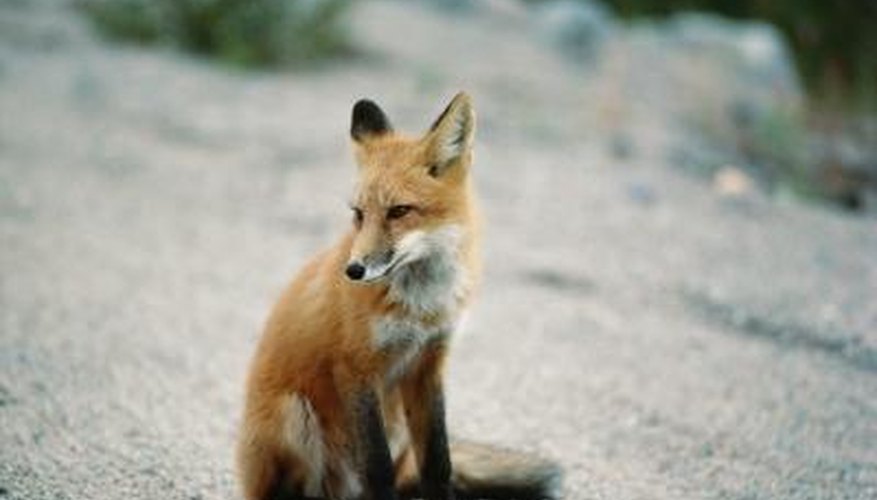Several predators throughout North America will prey on your livestock. Most are large and can be deterred by frequent activity and a good guard dog. One predator small enough to evade detection but large enough to prey on your smaller animals is the fox. Unless you are lucky enough to catch the fox in the act and deal with the problem on your own turf, you will need to find the fox's den. Locating a fox den takes tracking skills and intimate knowledge of fox behaviour.
- Several predators throughout North America will prey on your livestock.
- Locating a fox den takes tracking skills and intimate knowledge of fox behaviour.
Search for fox dens throughout the winter season. Look for freshly dug dens surrounded by small canine footprints.
Focus your search near a water source. Remember that foxes, like all animals, need water to survive. Look in the area surrounding a small creek or pond.
- Focus your search near a water source.
Look on a slope with good drainage. Think about where water would settle in a hard rain. Focus your search uphill from those areas.
Search wooded areas with thick underbrush. Look in thick trees and shrubs on the edge of fields where a fox would be able to hunt with stealth.
Locate likely food sources. Learn the habitats frequented by mice, rabbits and ground squirrels that foxes hunt on a regular basis. Search these areas thoroughly.
Follow your nose to a fox den. Remember that a fox is a canine and will urinate to mark his territory. Sniff the air around a suspected den to detect the heavy, ammonia-like aroma of fox urine to confirm your target.
TIP
A fox den is generally a hole that is seven to nine inches in diameter. Many foxes create a dirt mound in front of the entrance to their den to discourage predators. The area may be littered with unusual items such as chewed sticks, bones, food scraps and faeces that the young foxes, called kits, have left nearby. Look for several other holes nearby that the foxes will use for a stealthy escape. Foxes also bed down in tall grass, thickets or brush piles. These places are not technically dens, but they are maintained by the foxes as hiding places or temporary resting places. Foxes maintain numerous dens so that they can move periodically throughout their range avoiding detection and predators.
WARNING
A fox is a wild animal. Be cautious when looking for dens. A fox may attack if it feels cornered or to protect den or young.
